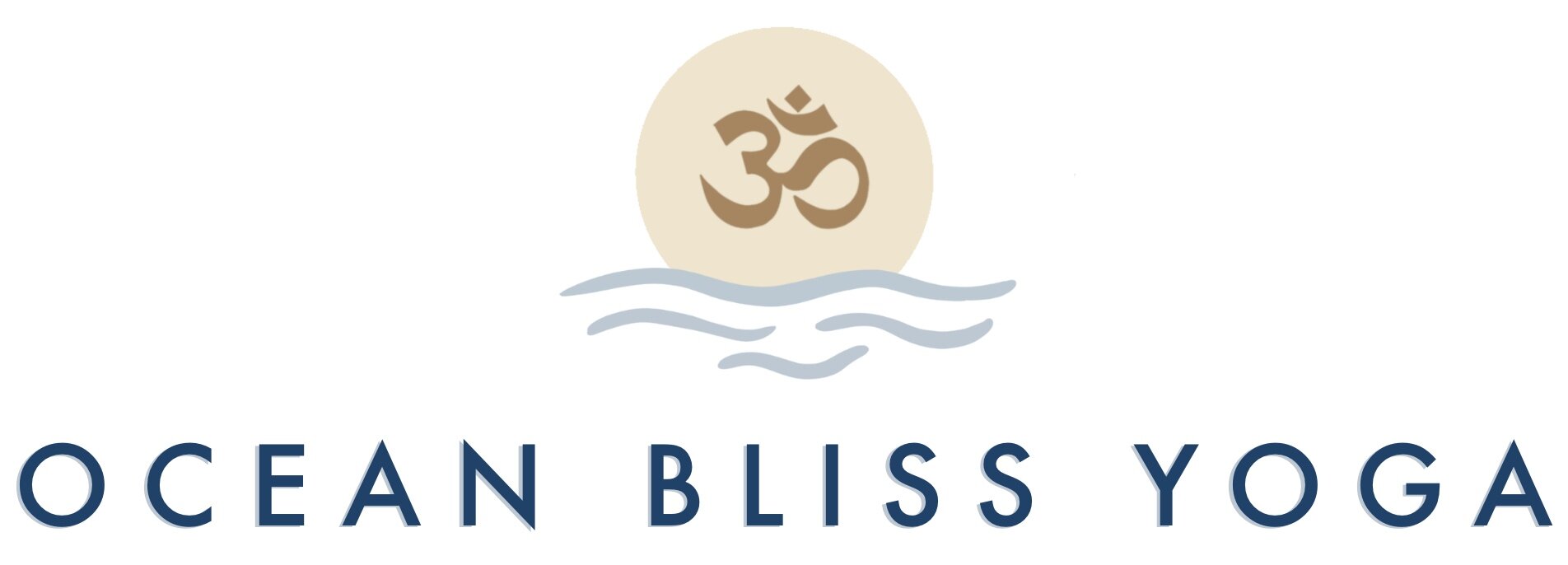A Blissful Life 12/23/24: Yoga History In A Glimpse
As we approach Ocean Bliss Yoga’s 200-Hour Yoga Teacher Training, I thought it’d be fun to share a little about yoga history. Today, people start yoga for a variety of reasons, but what is the heart of the practice? As a teacher or practitioner, it can be helpful to understand where the yoga tradition came from so you can decide how you want to carry it forward in your own intentions, practice, and teachings.
The first signs of yoga are traced back to the Indus Valley Civilization between 1500 and 500 BCE. One of the oldest civilizations, the Indus Valley Civilization began to emerge when people stopped being hunter-gatherers and started settling around rivers. Because people were no longer living in a state of survival, they were able to ask bigger questions, like, “Why am I here? What is my purpose? Why do I suffer? How can I suffer less?”
The Vedas began to be composed around 1500 BCE. The Vedas are 4 books of channeled wisdom that were orally transmitted until the Middle Ages. These hymns were mostly for priests, and they emerged as rituals to keep the nature of things moving smoothly. People thought that if they performed their hymn just right, everything would work out and the Gods would be at peace.
The Upanishads came about between 800 and 500 BCE when people began rejecting early Vedic rituals and leaving society to go into the forest to meditate. The Upanishads were also channeled texts and considered part of the Vedas, however they are different in that the rituals became internalized. Here, we see ideas like meditation, karma, energy, the subtle bodies, and the student/teacher relationship (guru) arising.
Next, Epic Stories were developed between 500 and 200 BCE, making yoga more accessible. For example, the Bhagavad Gita, which is a story from the Mahabharata, introduces new ways to practice yoga through 3 paths. Along with the path of meditation (Jnana), came Karma yoga (yoga of action, where you do your dharma without getting attached to the fruits of your actions) and Bhakti yoga (yoga of love and devotion).
The Classical Age arose between 200 BCE and 500 CE. Here, the different branches of philosophy in India had become sophisticated enough to debate and discuss each other. While seers were channeling wisdom in earlier times, now things were becoming more philosophical and studied. In this period, 6 orthodox schools of thought emerged, one of them being yoga. Patanjali wrote his famous Yoga Sutras, which had a huge influence on the school of yoga. Even though we see “asana” (posture) as one of Patanjali’s 8 limbs of yoga, this was describing a seated pose for meditation. At this point, the poses we now associate with yoga have not yet been introduced.
Around 600 CE, Tantra entered the picture and started giving more importance to the physical body. The yoga from the Classical Age was dualistic, treating the material and spiritual as separate. They, in a way, disregarded the physical and focused their energies on withdrawing the senses and finding “Purusa” (Universal Soul). Tantra, on the other hand, saw the physical as a manifestation of divinity. With Tantra, yoga became more of a world-affirming practice, where the world around and within us served as a pathway to enlightenment. Tantra opened the door to more body-based practices.
Then came Hatha, which encompasses all of the yoga practices we think of today (asana, pranayama, meditation) and has its roots in alchemy. Hatha practitioners asked, “How can I refine myself so that I can experience subtle layers and elevate my experience of life?” Hatha was a more physical practice that was done with the purpose of preparing the body for meditation.
Finally, we arrive at Modern Yoga. Considered the granddaddy of Modern Yoga, Krishnamacharya was a scholar and great philosopher living in India who taught Iyengar, Pattabhi Jois (Ashtanga), Desikachar (known for breath-centered practice), and Indra Devi (brought yoga to Hollywood). These four names were all very influential in bringing yoga to Europe and North America and making it more mainstream.
Ocean Bliss Yoga’s 200-Hour Yoga Alliance-Certified Yoga Teacher Training starts on February 21, 2025. Sign up before January 15, 2025 to save $500. For more information, go to www.oceanblissyoga.net/workshops or call me at 917-318-1168.
